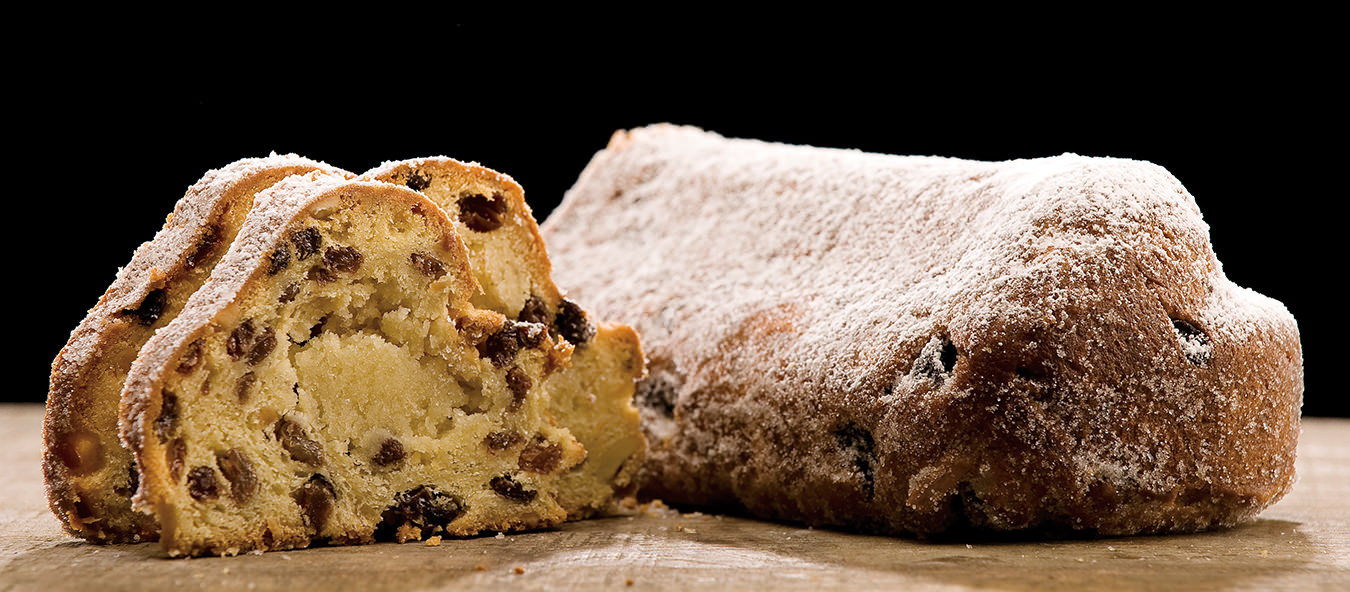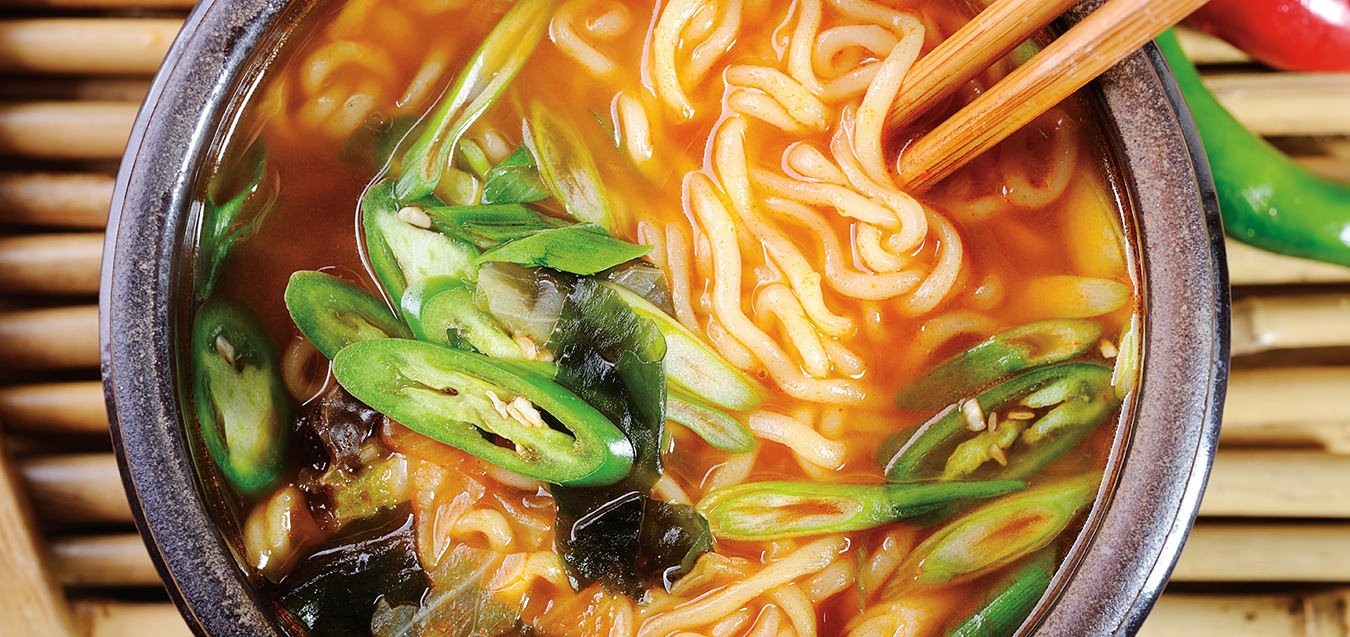Stollen by Thomas Haas
Stollen 2.0.

Fruitcake. It’s a word that strikes fear in the hearts of even the most diehard dessert fan. The holiday gift that everyone dreads, it conjures visceral memories of inedible, leaden creations chock full of luridly coloured and artificial-tasting fruit. Even award-winning pastry chef Thomas Haas readily admits that he’s never been a fan of stollen, the German bread-like version of fruitcake. So he’s taken it upon himself to subvert the conventional notions of stollen and elevate it from the brunt of countless jokes to a decadent, eagerly anticipated holiday indulgence.
The German love affair with stollen is long and storied. Steeped in tradition, Christstollen traces its origins back to Dresden in the fifteenth century. Baked during the Advent season through to Christmas, the sides of the oblong loaves are typically folded in toward the centre and dusted with icing sugar, symbolizing the Christ child wrapped in swaddling clothes. Stollen was originally made from nothing more than flour, oats, water, and oil, as the Catholic Church forbade the use of more luxurious ingredients during this time of fasting and restraint. But the future of this austere, tasteless loaf was transformed by a papal edict in 1490; Pope Innocent VIII’s “Butter Letter” granted bakers permission to enrich the dough with butter and milk by paying a small tax (unless, of course, you were in the family of the Prince Elector), and medieval sweets lovers rejoiced. So fervent are modern-day Germans in their stollen ardour that they inaugurated the annual Dresden Stollenfest with a three- to four-tonne giant stollen as its centrepiece.
A fourth-generation pastry chef, Haas was raised in the German village of Aichhalden in the Black Forest. “Growing up in a house where the bakery was basically below my bedroom made me take stollen for granted,” he reflects. “Working in the family bakery after school was part of our chores. My sister and I took turns—two hours each—making shortbread cookies, cutting cinnamon stars, soaking raisins, and making almond centres for the stollen. That’s what I remember most.”
For Haas, there was never any doubt that he would assume his ancestral trade. “Back then, it wasn’t necessarily a glorious job to be a pastry chef. It was still just kind of a hard-working manual trade and wasn’t appreciated the way it is now. But I never questioned myself when it came to taking up baking. That’s just the way things were done.”
And what an illustrious career it has been. His travels took him from Michelin-starred restaurants in Europe to executive pastry chef positions at Vancouver’s Four Seasons Hotel and Daniel Boulud’s eponymous Daniel in New York. Yet Haas remained captivated by Vancouver’s charms. “The time I spent here before heading to New York left such an impression on me,” he says. “I felt like this was truly my home.” Sure enough, he returned to Vancouver and put down roots.
“With my German background, I knew that I couldn’t not make stollen once I opened my own store,” says Haas with a mischievous grin. “But I didn’t even like traditional stollen until my colleague at the Four Seasons, pastry chef Gerhard Weitzel, made me believe for the first time that it could be the best thing in the world.” Over the years, Haas has added and omitted ingredients from his recipe in an ongoing quest to refine his new version of the traditional holiday cake. “Every year, we plug away on how we could improve it. Even when I think I’ve got it just right, I always find something else to fiddle around with.”
Crafting good stollen is an incredibly painstaking, labour-intensive process. Each year, Haas begins daily production on November 15, but September is when prep work starts in earnest. “We’re artisans, and everything we put into our stollen is made by hand. We soak our raisins in rum with fresh lemon and orange zest, and we do it way, way earlier than anyone else does for maximum flavour,” he explains. In contrast, however, he’s flummoxed by the innumerable lacklustre pretenders available on the marketplace. “The crazy thing is that I’ve seen commercially made stollen selling for only $4.99. Our large stollen loaf is $27, and I can guarantee that 50 per cent of that cost is only in ingredients—labour isn’t even factored in. I don’t know how someone is allowed to sell stollen so cheaply under that name when it’s nothing of what it should be.”
By Christmas Eve last year, they had completely sold out their staggering 6,000-loaf seasonal quota; in response to the demand, Haas plans to extend this year’s production until January 1. “Making 20,000 shortbread a week, that’s no big deal–they’re only 100-gram little things. But 6,000 stollen—that’s a totally different story. At almost a kilo each, that’s approximately five tonnes of product.” Haas grins with unfettered pride as he praises his impassioned team’s level of craftsmanship. “If there’s one thing we do to perfection, I think this is probably it.” Legions of his stollen fans would wholeheartedly concur.




